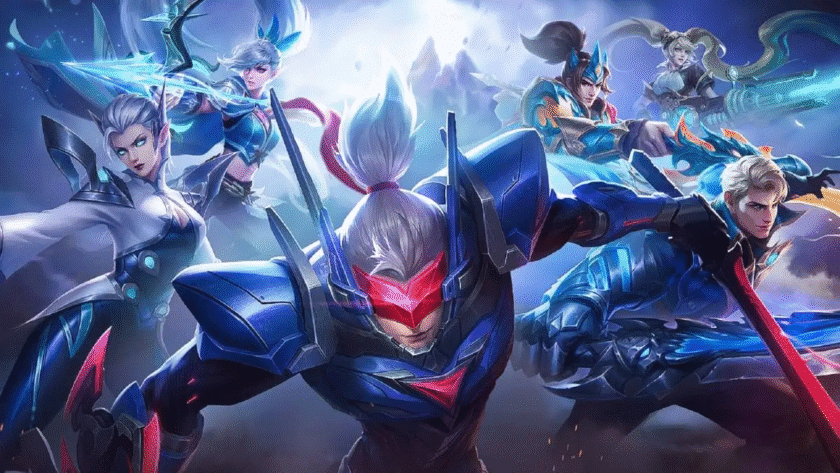Mobile gaming has evolved dramatically over the past decade, transforming from simple, hyper-casual games into sophisticated platforms for competitive eSports. This evolution has been fueled by advances in smartphone hardware, software optimization, and connectivity, enabling developers to create diverse gaming experiences that cater to a wide range of players. Today, mobile gaming encompasses casual entertainment, strategy-focused titles, and high-stakes competitive environments, reflecting a multi-faceted digital ecosystem.
The integration of mobile technology with social interaction, analytics, and streaming has expanded user engagement beyond traditional gameplay. Platforms such as betting apps illustrate how mobile solutions connect players with digital ecosystems, allowing them to interact with statistics, competitions, and community features in real time. These innovations highlight the central role of smartphones in reshaping the gaming landscape.
Hyper-Casual Games: Accessibility and Mass Appeal
Hyper-casual games are characterized by simple mechanics, minimal learning curves, and addictive gameplay loops. They are designed for quick sessions, often requiring only a few taps or swipes to interact with the game.
| Feature | Description | Example |
| Simple Controls | Minimalistic input methods | Tap, swipe, drag |
| Short Sessions | Games completed in a few minutes | Endless runners, puzzle challenges |
| Wide Reach | Accessible on most smartphones | Global downloads in millions |
These games appeal to a broad audience due to their low barrier to entry, fast-paced gameplay, and instant feedback. They often serve as the gateway to mobile gaming for casual users, introducing millions of players to mobile ecosystems.
Mid-Core Mobile Games: Strategy and Engagement
Mid-core games bridge the gap between casual and competitive titles, offering more depth, strategic elements, and longer engagement sessions. They often incorporate social interaction, in-game progression, and moderate skill requirements.
| Category | Description | Example |
| Strategy | Turn-based or real-time tactical gameplay | City-building or tower defense games |
| Role-Playing | Narrative-driven experiences | Mobile RPGs with character development |
| Social | Cooperative or competitive interaction | Multiplayer missions, guild systems |
Mid-core games contribute to a more engaged player base, fostering loyalty, repeated interaction, and community-building. They combine accessibility with complexity, creating a rich mobile gaming experience.
Competitive eSports on Mobile
Competitive eSports on mobile platforms has emerged as a significant sector within the gaming industry. Mobile eSports tournaments mirror traditional esports with structured leagues, professional teams, and live-streamed events. Popular titles have attracted millions of competitive players and viewers globally.
Popular Mobile eSports Titles
| Game | Genre | Competitive Features |
| PUBG Mobile / Battlegrounds Mobile | Battle Royale | Ranked matches, seasonal tournaments, team-based play |
| Mobile Legends: Bang Bang | MOBA | Real-time strategy, professional leagues, international championships |
| Call of Duty: Mobile | FPS | Ranked modes, competitive seasons, esports events |
| Clash Royale | Real-Time Strategy | Ladder systems, global tournaments, quick competitive matches |
| Arena of Valor | MOBA | Structured competitions, team strategies, esports integration |
These games require precise coordination, strategic thinking, and fast reflexes. Competitive mobile gaming has grown into a professional ecosystem, supported by sponsorships, streaming platforms, and community-driven tournaments.
Technological Innovations Driving Mobile Gaming
Several technological trends have enabled the evolution of mobile games from simple hyper-casual experiences to competitive eSports:
| Technology | Role in Mobile Gaming | Impact |
| High-Performance Hardware | Improved CPUs, GPUs, and RAM | Enables complex graphics and real-time processing |
| 5G and High-Speed Connectivity | Low latency, stable connections | Supports multiplayer eSports and live streaming |
| Cloud Gaming | Offloading processing to servers | Expands access to resource-intensive games on mid-range devices |
| AR & VR Integration | Augmented or immersive gameplay | Adds interactive layers and experiential depth |
| Advanced AI | Adaptive gameplay and matchmaking | Balances player experience and engagement |
These technologies contribute to smoother gameplay, higher fidelity graphics, and responsive online interactions, enhancing both casual and competitive mobile gaming.
Social and Community Engagement
Mobile gaming is increasingly social, with in-game chat, guilds, forums, and social media integration forming vital aspects of the experience. Player communities drive engagement by organizing tournaments, sharing strategies, and fostering loyalty.
| Engagement Feature | Function | Benefit |
| Live Chat & Voice | Communication during matches | Improves team coordination and strategy |
| Social Media Integration | Sharing achievements and content | Expands visibility and player network |
| Leaderboards & Rankings | Competitive tracking of performance | Encourages continuous play and improvement |
| Community Tournaments | Player-organized events | Strengthens social bonds and participation |
Social engagement enhances the longevity of games, encouraging repeated play and providing competitive opportunities even outside professional leagues.
Mobile Gaming Monetization Trends
Monetization in mobile gaming has evolved alongside innovations in gameplay and engagement. Common strategies include in-app purchases, battle passes, ads, and subscription services. These mechanisms support ongoing development, live events, and esports ecosystems.
| Monetization Model | Description | Example |
| In-App Purchases | Cosmetics, boosters, or currency | Skins, power-ups, virtual currency |
| Battle Passes | Seasonal rewards for gameplay milestones | Unlockable content for active participation |
| Advertisements | Display or video ads | Free-to-play game support |
| Subscriptions | Premium access or perks | Exclusive content and early access |
Monetization strategies are closely linked to user engagement, creating sustainable ecosystems for developers while maintaining accessibility for players.
Future Trends in Mobile Gaming
The mobile gaming landscape continues to evolve with emerging trends:
- Expansion of competitive mobile eSports into mainstream media and live events
- Integration of AI-driven personalization for adaptive gameplay
- Enhanced AR and VR experiences for immersive interaction
- Cross-platform play between mobile, PC, and console
- Growth of community-driven tournaments and social features
These developments suggest that mobile gaming will continue to expand in complexity, competitiveness, and engagement, offering both casual players and professional gamers dynamic opportunities.

Conclusion
Mobile gaming has evolved from hyper-casual experiences to competitive eSports, driven by technological advancements, strategic gameplay, and community engagement. Popular titles like PUBG Mobile, Mobile Legends, and Call of Duty: Mobile illustrate the competitive potential of mobile platforms, while hyper-casual and mid-core games maintain broad accessibility.
Through innovations in hardware, connectivity, AR/VR, and AI, mobile games now provide immersive, interactive, and socially connected experiences. The mobile gaming industry is poised for continued growth, balancing accessibility, competition, and technological innovation to reach global audiences.

